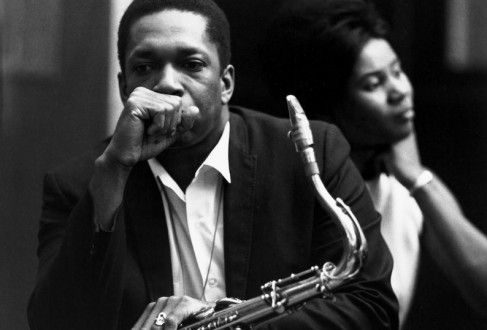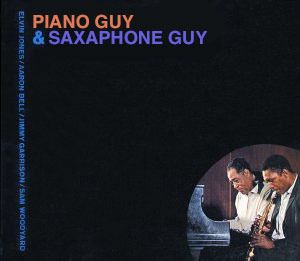Again, WHERE IS YOUR MUSIC?
In sheet music a composer would specify that the piece of music is in C minor before the start of the song, by writing in all the accidentals on the stave (D#, G#, A#), because C minor is (C, D, D#, F, G, G#, A#).
dude I JUST told you what accidentals were and you go off and use it wrong again! accidentals are written next to the notes and NOT the key signature because they are literally notes that don't normally belong in the key signature! why do you think they're called accidentals?
Yes, you could say that pieces in E diminished or E melodic minor are both in E, but when someone says "this piece is in E" without specifying diminished or melodic minor, they are referring to E Major (E, F#, G#, A, B, C#, D#).
this is you confusing scales with keys again! A piece can't be in the key of e melodic minor because e melodic minor is a description of a scale that starts on e, NOT a key! a key is literally just the note where the composer wants to center the piece around
I took 15 years of classical piano and music theory, and I STILL know less than some of the people you're saying are wrong and yet you have the gall to visit Wikipedia a few times and have that be enough for you to act like a Real Jerk
how do you get to be this deluded?
"As a man who personifies honesty and integrity"
-Worst poster of the year, 2016
Last edited by spacetownsavior (Apr 22, 2016 2:58 pm)
gonna bring this back to the OP:
the entire starscream catalogue
that 12insomnia mixtape (guilty pleasure)
j. arthur keenes band - the bus that couldn't slow down
condom - live in nyc
and honestly probably everything cymba's ever going to make
@deerpresident:
I dont upload music here because it can be stolen and sold under another name.
@protodome:
What does posting a picture of a saxaphone guy and a piano guy prove, that you are a smug bish?
If you actually bother to check the facts you will find that you were wrong. I even gave you examples proving this, which you then proceeded to ignore.
You want to flex nuts but in the end you are wrong.
@spacetownsavior:
I'll admit that I used the term 'accidentals' incorrectly...As I said I dont read sheet music or play piano.
I should have said that the sharps or flats are written on the stave to show key signature (which is a description of a musical scale, such as C minor, or indeed E melodic minor).
"why do you think they're called accidentals?"
Could it be because they are notes that fall outside of the scale specified in the key signature?
Sounds like you took 15 years of classical wrong to me.
I will add that there is no need to get so emotional on your part (prissy).
Last edited by JaffaCakeMexica (Apr 23, 2016 2:50 pm)
I can't quite decide if his troll game is strong, or if he's retarded. Sure is entertaining to read though.
I personally don't find anything wrong with being a smug, psudeo-gei bish while listening to my my favorite prissy chiptune euro disco. Diffrn't strokes for diffrn't folks my man.
If you look out your windows ladies and gentlemen, you'll see our destination, The Graveyard, to your left. We'll be there shortly. Thanks for flying CM.O Airlines.
I can't quite decide if his troll game is strong, or if he's retarded. Sure is entertaining to read though.
+1
Fearofdark wrote:Also C major doesn't have to just be white notes.
erm...I beg to differ.
C Major (ionian):
C, D, E, F, G, A, B
Yes, that's C major the scale. I thought the discussion was on key signature/tonality tho. If a piece of music is in C major, it doesn't have to exclusively use white notes. Key signature refers to the 'tonal centre' of a piece of music. Ie. What key the piece of music gravitates to/resolves to. It is not necessarily the chord or scale the piece of music starts in.
Some major modes deviate from using exclusively white notes. For instance, C Lydian (C, D E F# G A B) is considered a major mode, but the 4th degree is raised. The piece of music would still be written in C major tho (so, no sharps written in). Protodome explained this in further detail.
Despite all of this, 'just using the white notes' and C major are still good enough for Stravinsky: http://www.youtube.com/watch?v=dgSaHLF7QAs . But I guess that makes him a terrible composer too. Pfft amateur.
B Harmonic minor (B, C#, D, E, F#, G, A)
Also, this is slightly wrong. B harmonic minor is actually: B, C#, D, E, F#, G, A#). You've written the ascending melodic minor/mixolydian mode.
Last edited by Fearofdark (Apr 23, 2016 6:52 pm)
If one is prissy, how can one achieve the realization that one is completely wrong?
https://www.basicmusictheory.com/#keysig
Also, Jeffrey Lim released the source code to impulsetracker a while back...which is nice.
Last edited by JaffaCakeMexica (Apr 23, 2016 8:21 pm)
what's with insulting everyone who disagrees with you? also, you know you can upload music to places like soundcloud, youtube & bandcamp if you think posting tracks here is somehow too risky
That literally proves Fearofdark's point. A key signature is written to make it simpler to write in a particular key if you'll be commonly using notes from a particular scale and will only more rarely have to mark accidentals.
All four of those terms mean different things but nobody is arguing that they're not related.
Last edited by jefftheworld (Apr 23, 2016 8:50 pm)
i think he means like he finds music that uses exclusively notes from a c major scale to be boring..fair enough i guess.
i think if you're listening to electronic music and the way you judge interest or complexity is purely by pitch notation you're kind of missing the point maybe?
heck like even classical notation has a lot more going on than what pitches are being played; there's arrangement, rhythmic and dynamic interest, performance context, etc.
even then there's a lot of really dope, interesting music that's only using 7 notes or w/e. what a dumb way to listen to music.
Last edited by Fudgers (Apr 23, 2016 9:12 pm)


